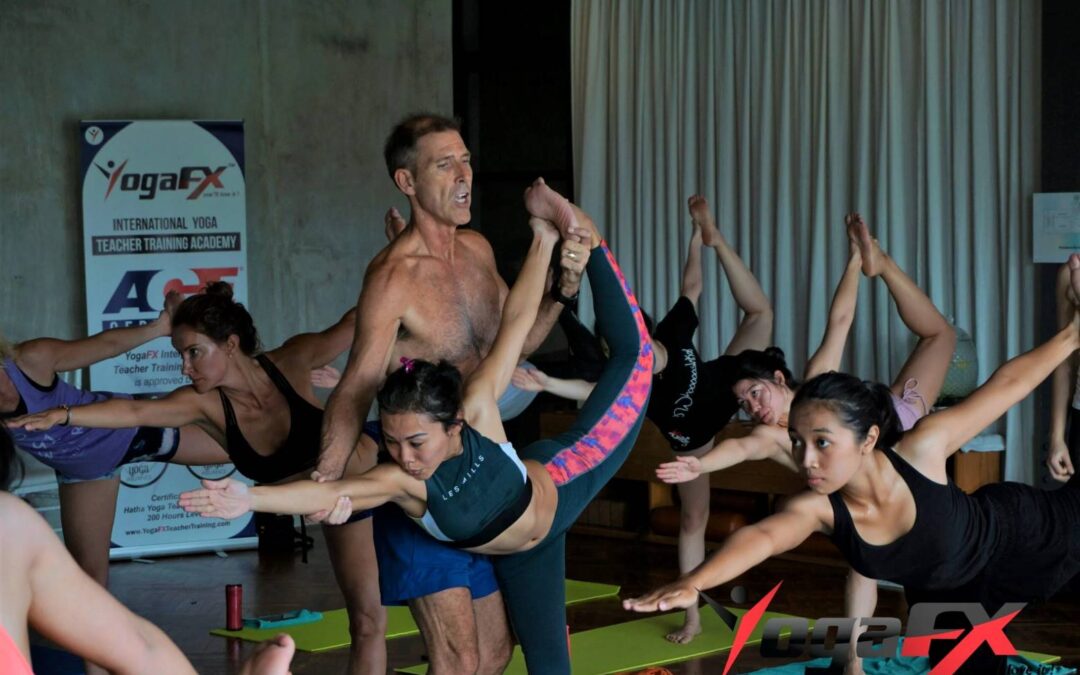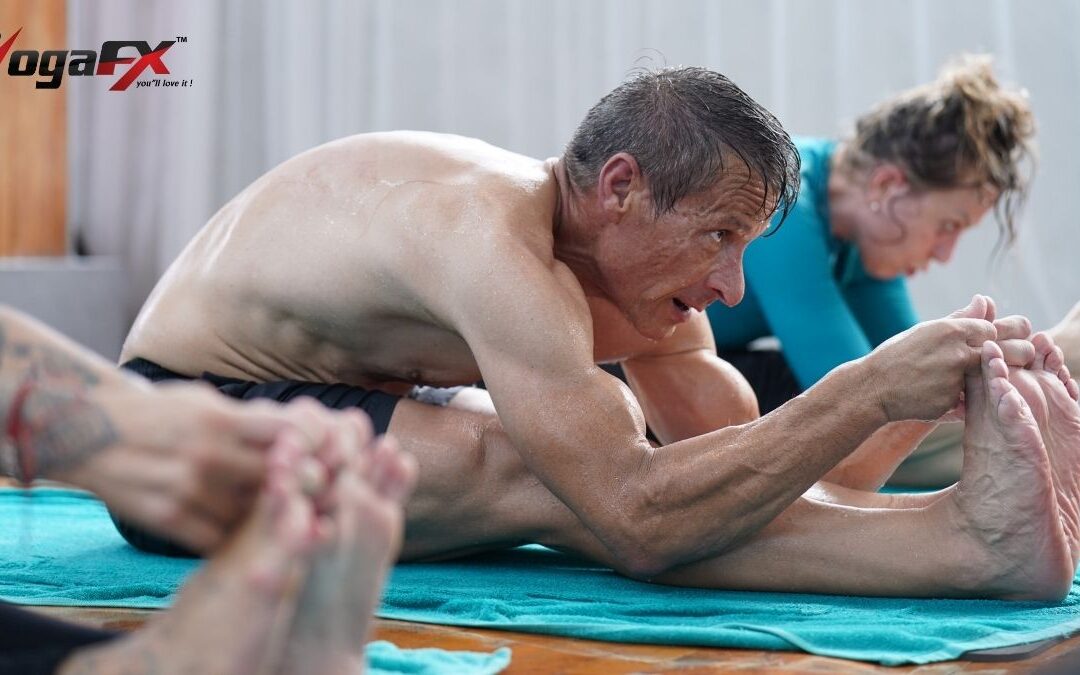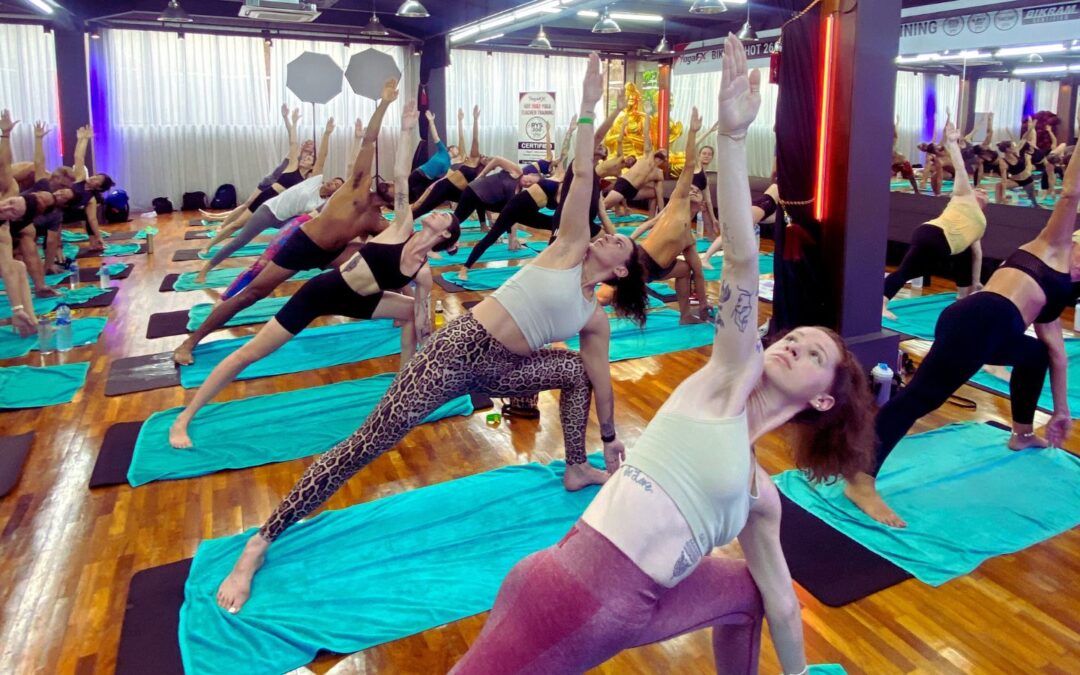Bikram yoga is not hot yoga, While both are set in a heated room designed to make you sweat, there are key differences that separate the two. how hot Bikram yoga?
For starters, Bikram is hotter, sometimes much hotter. Invented by Bikram Choudhury, a yogi from India who has made quite a name for himself amongst celebrities, Bikram yoga must be performed in a 105 degree heated room, while hot yoga can be heated at pretty much any temperature the instructor or studio wants it to be. And while hot yoga consists of many different poses, Bikram’s patented 26 poses do not change.
Below is a comprehensive list of what makes a class hot or Bikram yoga :
1. Bikram yoga consists of the same 26 poses and two breathing exercises performed in the same order every class for exactly 90 minutes.
2. Hot yoga can be comprised of many different poses that vary by class and studio.
3. Bikram yoga studios, what Choudhury calls “torture chambers,” must be heated to 105 degrees with 40 percent humidity.
4. Hot yoga rooms can vary in humidity and are generally heated to anywhere from 80 -100 degrees.
5. The floor of Bikram yoga studios must be carpeted with mirrors on the front wall and bright lighting.
6. Hot yoga may be performed with dim lights, by candlelight, and on any surface.
7. Bikram yoga instructors must be trained by Bikram Choudhury himself and their studios must be affiliated in order to be considered true Bikram yoga.
8. There can be no music, clapping, or hands-on instructor adjustments in Bikram yoga.
9. Hot yoga often has music playing during the class and is followed by a round of applause.
10. Students are not permitted to talk during Bikram yoga.
11. Hot yoga students are allowed to interact with each other and with the instructor.
There may be no need to put yourself in a stifling 100 degrees for a hot yoga session.
Bikram yoga, also known as hot yoga, involves 26 positions usually done in a room of 90 or 100 degrees. Part of the allure is that the heat opens up the muscles faster than room temperature and can release toxins from the body, but new research from Texas State University and the University of Texas at Austin found it’s no more effective than the latter.
Yoga at room temperature does exactly the same thing as hot yoga, the researchers found. It reduces the risk of heart disease and can delay atherosclerosis, a disease where plaque builds up in arteries and can result in a heart attack or stroke. Half of the Bikram yoga class was spent in standing positions, which requires balancing on one leg and can be more taxing than floor positions, the research said.
They looked at 80 participants enrolled and randomly assigned to three study groups a heated room, a room at regular temperature, and a control group, and asked the participants to attend three Bikram yoga classes a week for three months.
Here’s how much you should spend on a yoga mat
Why avoid hot yoga in favor of regular yoga? There are additional risks associated with hot yoga. People can suffer from heat-related illnesses, according to a separate study from 2015 sponsored by the American Council on Exercise. A group of 20 healthy men and women practiced Bikram yoga in a 105-degree room for 90 minutes after swallowing a temperature sensor and wearing a heart rate monitor.
The researchers found the participants’ body temperatures rose to 103 degrees, one degree away from potentially suffering from heatstroke. The average heart rate for the men was 80% and the women’s was 72%. Sweating during hot yoga doesn’t do enough to cool the body down, the researchers said.
But there may be some benefits to hot yoga. It can improve “vascular endothelial function” or thin blood vessels in middle-aged and older adults in a relatively short time period, according to a 2016 study from the University of Texas and published in Medicine & Science in Sports and Exercise. “Bikram yoga may be effective as a secondary preventative measure in reversing endothelial dysfunction in middle-aged and older adults who are at risk of developing vascular disease.”
If you’re set on participating in a hot yoga class, there are ways to help mitigate any health risks. Drink 80 ounces of water the day before, and 16 ounces of water two hours before a class. After class, refresh by drinking water with lemon or having dark leafy green vegetables or water-heavy fruits like watermelons and cucumbers. Stretch before and after sessions and use a towel during the class, not just to pat down sweat but also to dry off your mat and prevent falling.





